When making bread, do you imagine golden crispy crust on the outside with a soft and airy crumb inside?
Yummmy!
Finally, you remove your bread from the oven and it’s hard as a rock! What happens, why your bread is too dense?
Here you’ll find out more about the reasons that cause this unpleasant result and how to make perfect bread. Also, we’ll look at the most common reasons that cause too dense banana bread and sourdough.
IN THIS ARTICLE:
Why Is My Bread So Dense?
So, if your lovely bread comes out too dense and feels like a brick, it’s important to understand why that happens to avoid the same mistake next time. Whether you are using an oven or breadmaker, this can occur. Dense bread is the direct result of not keeping enough gas and moisture in the dough to create the space needed to produce a light and fluffy texture once it has been baked. Here we’ll mention the most common reasons.
- Under Kneading Or Over Kneading – Many chefs say this is the most common reason why your bread is dense. Kneading is an undeniably very important factor in bread quality. This means you need to knead it for at least 10 to 20 minutes.
Windowpane Test
- Remove a small chunk of the dough and stretch it out slowly. The dough should stretch but not tear.
- Time To Rising – Another tricky thing is the amount of time that bread needs to rise. You should prevent under-rising and over-rising. Bread typically needs to rise twice. You can use bread proofing basket. Do the poke test – Poke the dough gently and check the recovery time. A slow recovery means your bread is rising enough.
- Flour Problems – Two problems – too much flour and the wrong type of flour. Use high protein flour with at least 10%-13% protein content. Low protein flour will make dense bread while high protein flour will result in soft and tasty bread. Also, don’t overdo it with flour, follow the recipe.
- Kitchen Temperature – Yes, you read it right. If your kitchen is too warm, the dough will quickly rise and collapse. If it’s too cold, the yeast won’t ferment.
- Not Molding Correctly – A proper folding technique is important to create enough tension to make a fluffy loaf of bread.
- Expired Yeast – Since yeast is a live single-cell organism, it can and does expire. If it’s dead, the yeast won’t activate and your bread won’t rise.
- Baking Time – Underbaked loaf of bread will be dense, you need to be sure your bread is baked before you take it out of the oven.
- Cool The Bread Properly – This is often an overlooked step of bread making. Proper cooling will determine the texture of the crust and the crumb.
- Reliable Recipe – Last, but not least, some recipes just aren’t very good. Once you find the bread recipe that works, don’t change it.
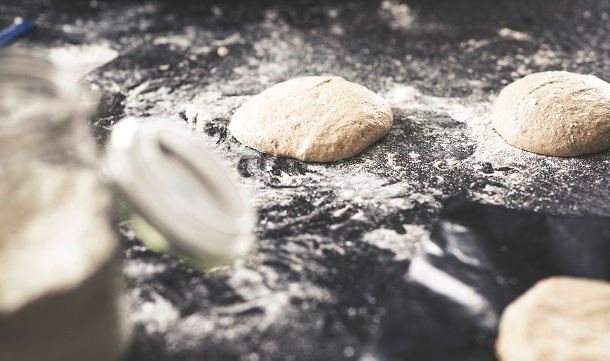

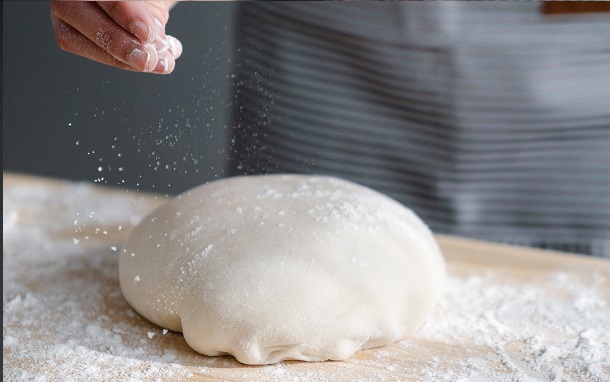

Can You Still Eat it?
Now, you bake bread and it’s too dense, so what to do? Can you eat it?
Under- or over-proofed bread will change the “crumb” of the bread but has nothing to do with the food safety. So if it’s baked fully, it will be safe for eating. The best way to tell if a loaf is fully baked is to measure its internal temperature. You are looking for 190°F – 200°F (88°C – 93°C).
If you like the flavor, you can eat it. Also, you can always slice and toast.
What To Do If Bread Is Too Dense?
You don’t have to throw away the dense loaf but try it again. This means you can repurpose bread into several things, such as:
- croutons
- crostini
- bread pudding
– just slice the dense bread and toast it. Then slice it in cube shape and you can use the croutons for salads, soups, stews and more.
– slice the bread but put the slices in the oven for about 10 minutes. Then to each slice add cheese, olive oil, garlic, tomato and any ingredient you like and you have great small snacks.
– it’s a dessert made with bread, milk, cream, eggs, some fat, and pudding. The recipe is simple so you can make it quickly with your dense bread.
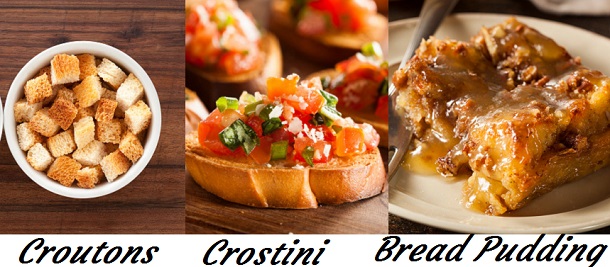

How To Avoid Dense Bread?
To prevent dense results next time you will make your homemade bread, here are some methods you can use to make softer bread. Read on and follow some of these techniques if you struggle with a heavy and dense bread.
- Use a Tea Towel – Place a ta towel over the baked bread whilst it cools. This will help to retain moisture in the crust to make it softer. Cover it for a few minutes.
- Amount of Water – Increase the amount of water in the recipe. The gluten will properly extend if there is well-hydrated dough.
- Add Fat – By introducing fat you’ll get softer results.
- Proof For Longer – Under proofing is one of the simplest causes of over-dense bread
- Reduce the Baking Time – By reducing the baking time, less moisture will depart.
It’s also important to avoid the most common breadmaking mistakes such as not weighing ingredients, mistakes with yeast and liquid, not covering and more. Check all the details in the video.
Sourdough – Too Dense?
Sourdough bread is one of the most popular types of bread you can make at home. Mastering sourdough bread at home can be hard. The main reason why this bread gets dense is a weak starter that is used.


The second reason is the gluten structure that may be undeveloped and can’t stretch to retain the gas. Also, too much moisture causes dense and gummy sourdough.
Using a ripe sourdough starter, measuring the ingredients carefully, adding more water, increasing bulk fermentation, kneading a dough a bit longer, using a hot oven and cooling the bread properly can prevent the density in your bread. These tips should help you with your perfect sourdough.
Why Is My Banana Bread So Dense?
This is another popular type of homemade bread. It’s a favorite type of many people because of its quick preparation and the main ingredient – slightly over-ripe bananas. The perfect banana bread is light and fluffy, but many people ended up disappointed with dense banana bread.


So how to avoid too much density in banana bread? The banana bread quality can be influenced by: the temperature of your oven (350°F), baking time (on average 50 minutes), liquid ingredients, flour type, and you should avoid black and green bananas, leavening agents, etc. Follow the recipe and you shouldn’t have problems.
To Wrap It Up
When people start to learn to make bread, this is the most common question – why is my bread too dense? On the one hand, baking bread is so simple, you’ll need few ingredients, but there are plenty of factors and mistakes that contribute to a disappointing loaf.
Don’t give up, it’s worth having a light and fluffy homemade bread on your table.












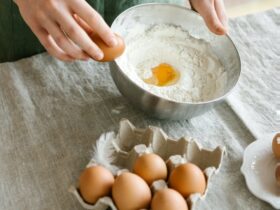


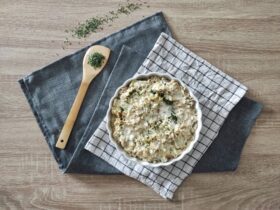

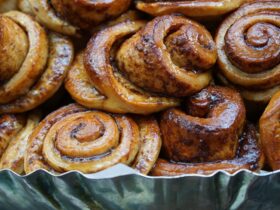
Leave a Reply